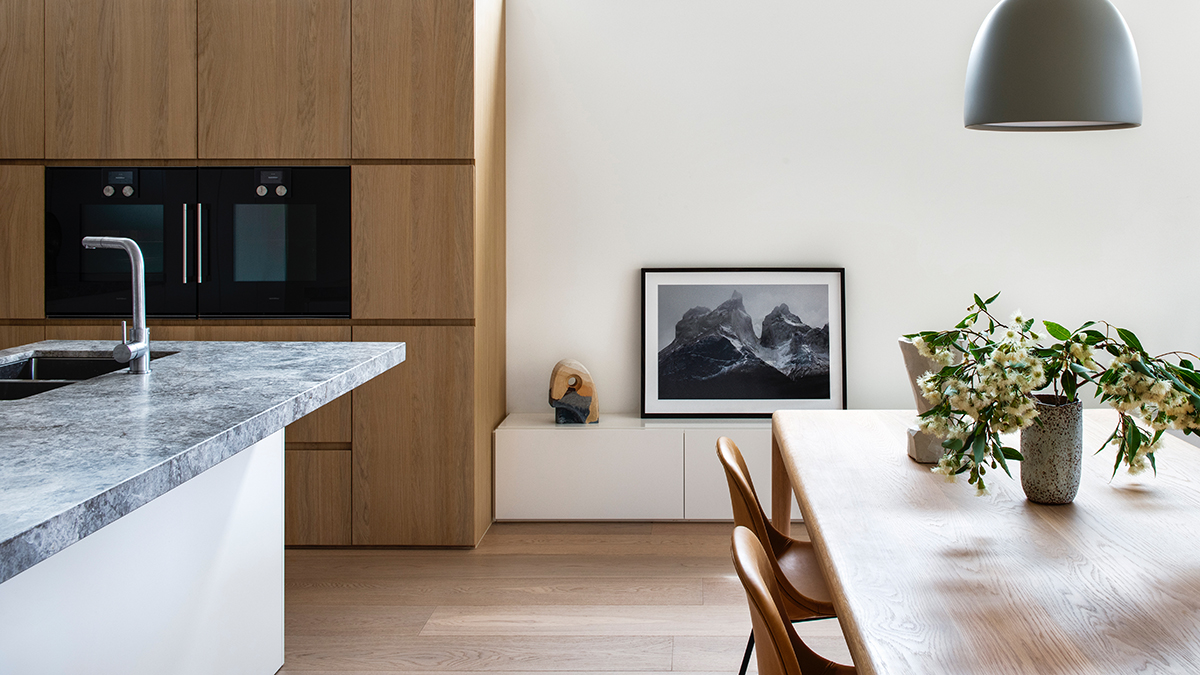
Designer Rob Ryan’s fresh take for Gaggenau’s ‘Art of the Kitchen’ series
With our increasingly urban lifestyle, biophilic design is becoming ever more urgent – in fact our happiness and wellbeing depend on it. Mark C. O’Flaherty speaks to three visionaries in the field, on why reconnection with nature not only induces calm, but is the only sustainable solution
There’s nothing new about the principles of biophilic design. As a philosophy for living, it was the status quo before the industrial revolution, and in many cultures it’s still the norm. But we have literally built walls around ourselves to create a distance from the natural world. In Japan, hinoki wood is one of the most popular materials for construction, not for its impervious and practical qualities, but for the intense aroma it gives off. To live in a room furnished in panels of hinoki is to have your olfactory senses transport you to the most fragrant wilderness. In many Nordic countries, city dwellers customarily have a rural cabin to escape to, to reconnect with nature.
Follow LUX on Instagram: luxthemagazine
As our ecosystem continues to face what increasingly feels like insurmountable challenges, and urbanisation becomes the default, biophilic principles are growing in importance in design. Though they aren’t radical or new, we’ve lost sight of how crucial they are to our wellbeing. This isn’t about recycling, sustainability, or alternative ways to generate energy (although they are part of the greater narrative), it’s about how we can engage with nature in our homes in a way that will have benefits for our physical and mental health.
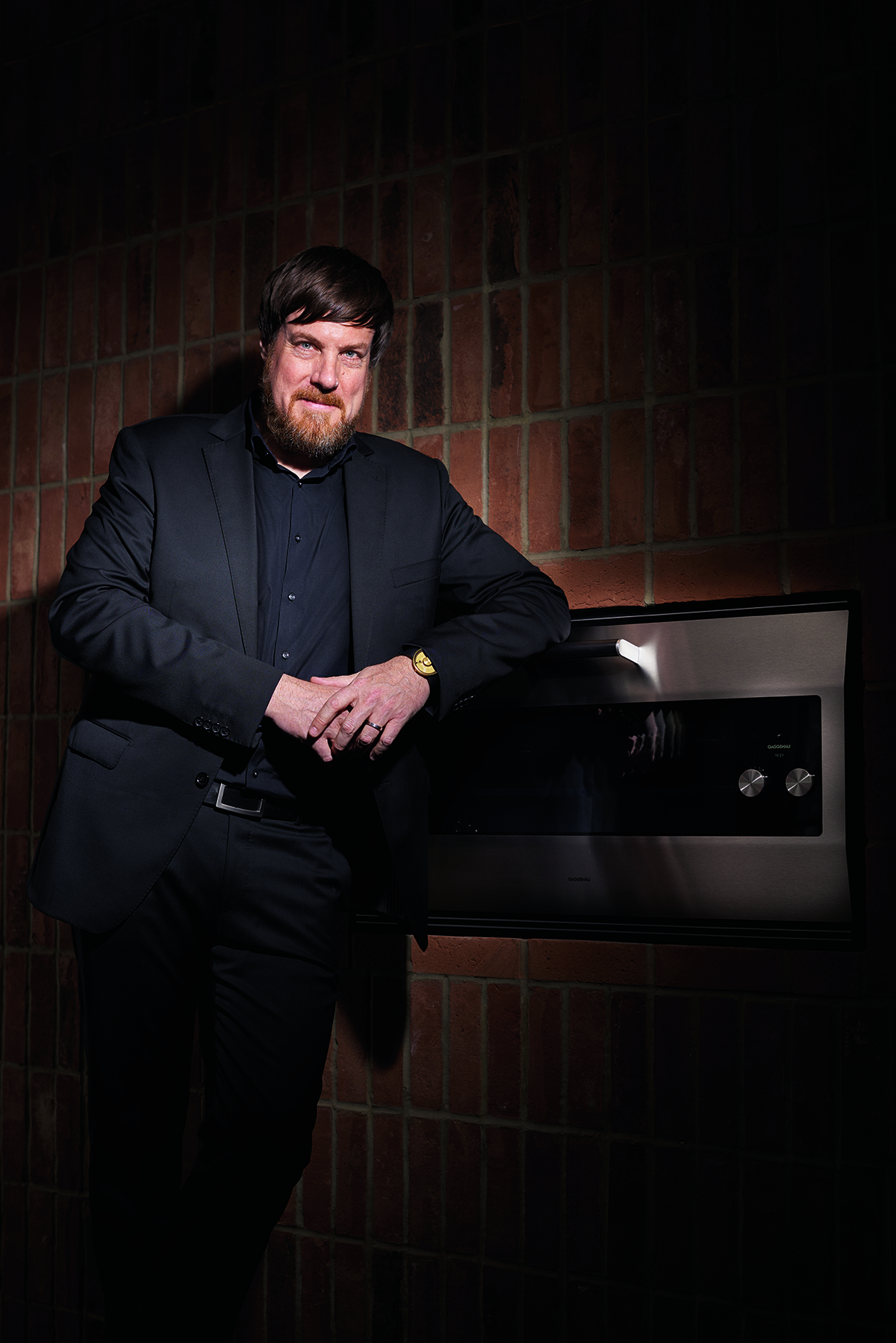
Head of Design at Gaggenau, Sven Baacke
Product designers are taking this on board luxury brands are creating functional areas, objects and spaces with emotion in mind, and an understanding of natural pathways. “Our customers may create indoor-outdoor kitchens, spaces where kitchen and living and dining are integrated and designed with a lot of natural materials, leading to a herb garden or natural wall,” says Sven Baacke, the head designer at Gaggenau. “It is tied into wellbeing, to being at one with nature, and also to sustainability: water features, green spaces, flora and plants, and the use of natural and found materials that both reduce carbon footprint, and elements like water use in manufacture. We design our products with their broader concept, and the lives and values of our customers in mind.”
Biophilia is about connections and feelings. It is the presence of living walls, pleasing aromas and good quality air. It is the marriage of colour psychology with an awareness of light, fragrances, textiles and acoustics, and has become an increasingly sophisticated discipline. It is a complex exploration of how neuroscience intersects with architecture, and when biophilic design is incorporated within urban planning as well as interiors, it treats what was once seen as just bricks and mortar as part of a living organism. It can contribute to tackling serious environmental challenges, including the Urban Heat Island effect (major cities are profoundly hotter than rural areas in summer), restoring lost natural habitats, and lowering the effects of CO2 emissions. In his hugely influential 2012 book The Shape of Green, the architect and author Lance Hosey who died last year – argues that sustainability can’t exist without beauty: “Long-term value is impossible without sensory appeal, because if design doesn’t inspire, it is destined to be discarded.” Our future can, if we let it, be shaped by what truly nourishes us as human beings.
The Biophilic Visionaries
Oliver Heath
Director of Oliver Heath Design
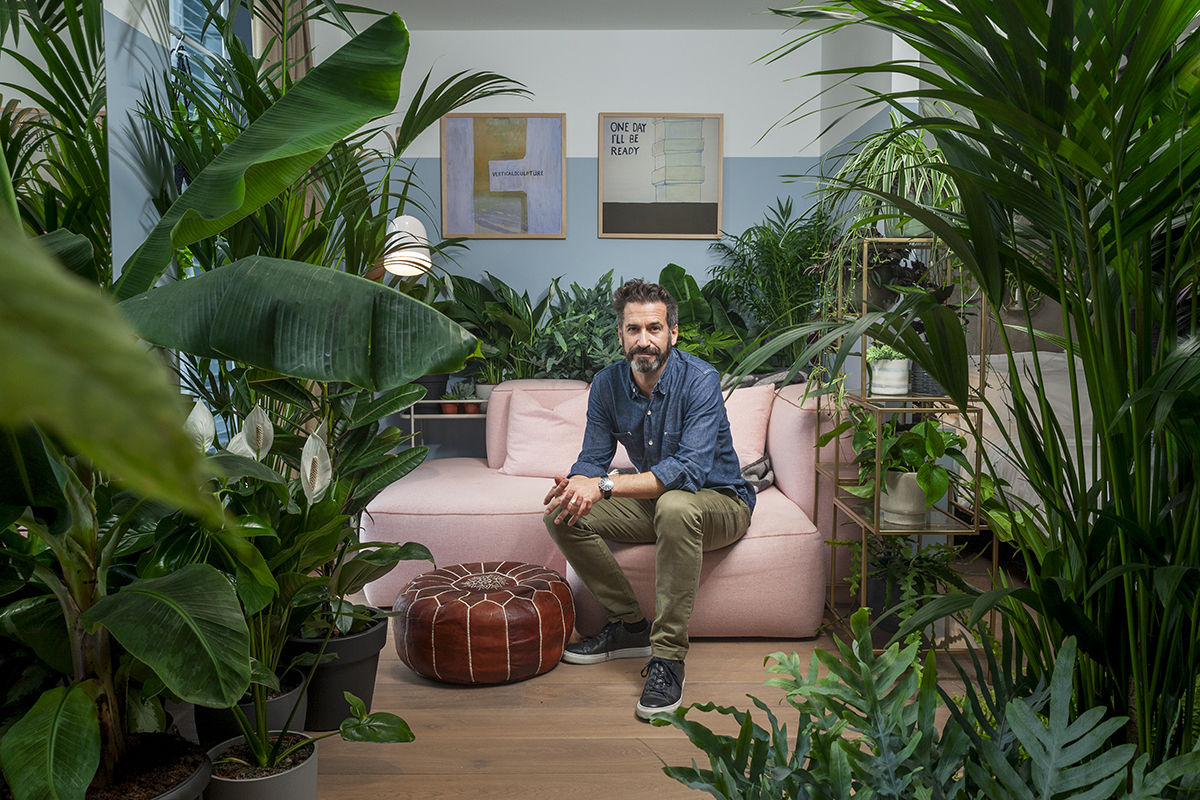
Oliver Heath, the director of Oliver Heath Design
I switched to investigating a human-centred form of design about 10 years ago. I had been working in the field of sustainable residential design for years, but became frustrated because people weren’t adopting the methods, ideas and principles. They weren’t engaged. There was a fatigue around the idea of sustainability. I changed the tone of my conversation to be about creating a home that supports your physical and mental wellbeing. That resonates because everyone wants to be happier and healthier.
Design is much more than aesthetics – it’s about how you feel inside a space. Stress is endemic in our lives. We’re living in built-up urbanised spaces. By 2050, 66 per cent of the world will be urbanised. Biophilic design is a means to reconnect you with nature, and elicit a similar response to wonderful times you’ve had on beaches, in forests or on mountains. Built environments are hard-edged and geometric, and they aren’t the space you actually want to be in. Biophilic design works – it increases productivity in the workplace by 6-15 per cent, and helps you recuperate in a hospital 8.5 per cent faster. We are taking what we’ve learned from those spaces to residential projects.
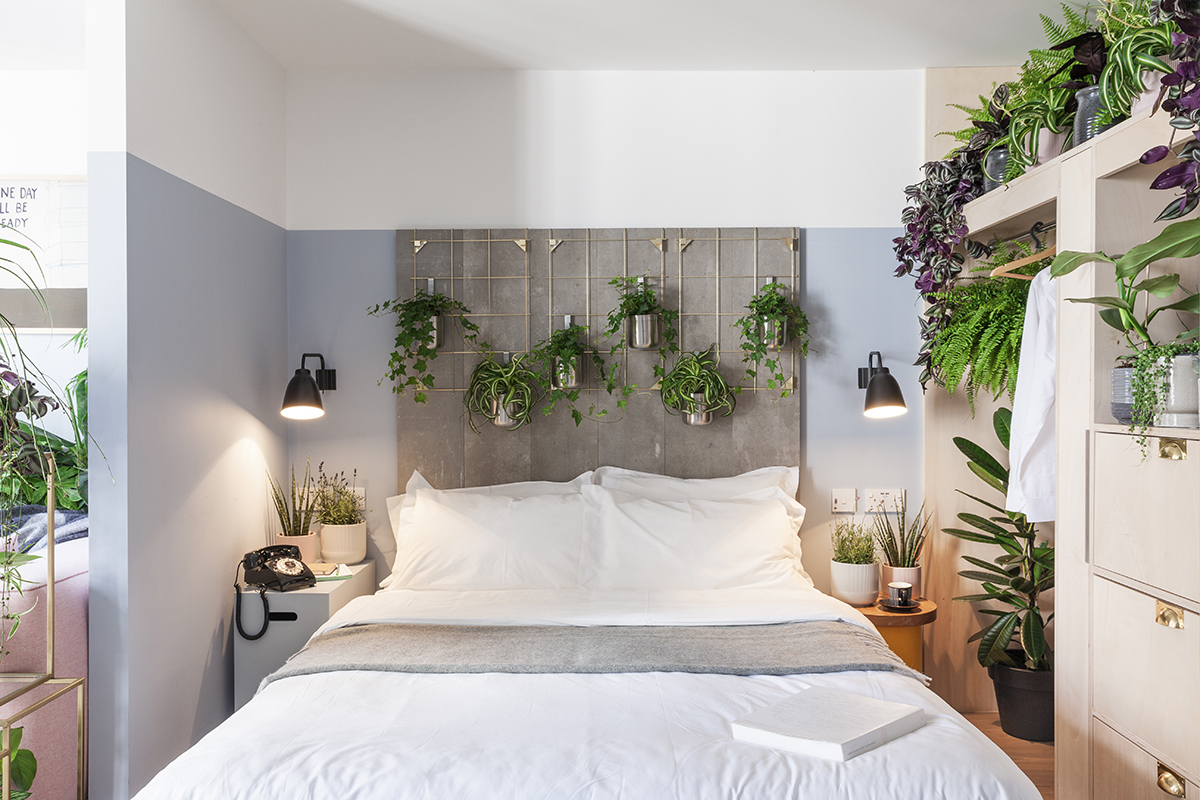
A Heath-designed bed landscape for a biophilic hotel project
Instead of looking at what next year’s colour is going to be in terms of trends, there are more important things to think about. Your bedroom should have soft acoustics, and no electronics in it apart from lighting. I use smart systems that change the colour of light by my bed, and an alarm clock that wakes me up gently with changing, increasing levels of light. Materials are important: if you sleep in a pine bed, it lowers your heart rate.
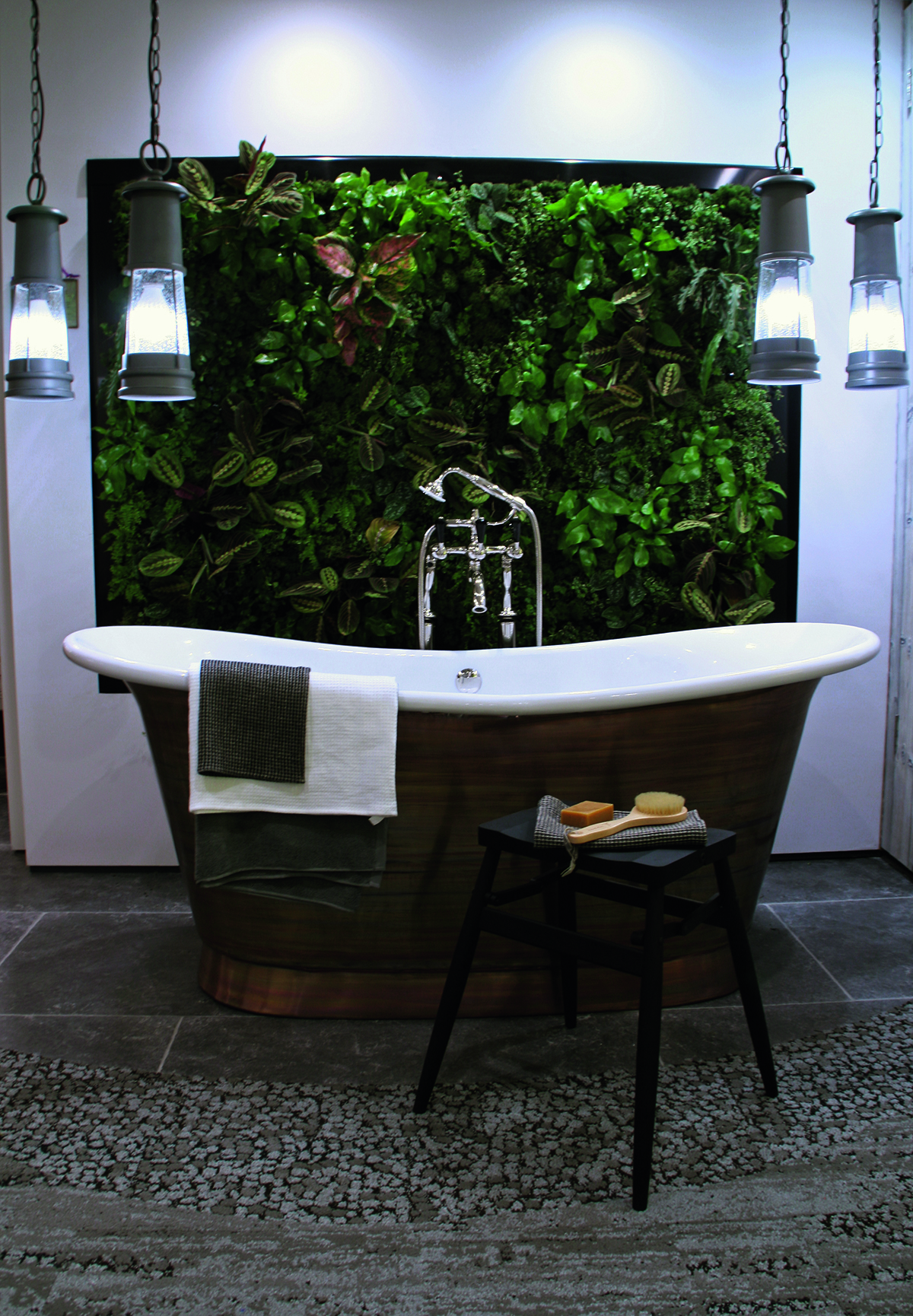
A biophilic hotel bathroom by Oliver Heath
We know that by connecting with people in a natural environment that it creates a certain mood and dynamic. The most obvious example is sitting around a campfire, when you feel the warmth of the fire, hear the crackle of logs and smell food cooking. Shared moments in nature bring people together. I have wood panelling in my home made from salvaged larch, from trees that came down in Kew Gardens in the big storm of 1987, and we used the same material to clad the kitchen cupboards. We know that just seeing natural wood makes us feel better. The work surfaces in my kitchen are made from crushed recycled glass, and the walls are painted with Volatile Organic Compound-free (VOC) eco paints. As kitchens can be limited in space, I often recommend introducing greenery via a small green wall system – it can improve air quality and provide you with fresh herbs.
We have worked on numerous white papers studying biophilic design. The latest is about designing for cognitive and sensory wellbeing. Sustainable design is about engineering, but biophilic design is different. We have established a series of courses to teach the core principles, helping you explore what’s possible and how to achieve the best results. People have found them hugely rewarding, and a total revelation.
Matt Morley
Founder and director, Biofilico
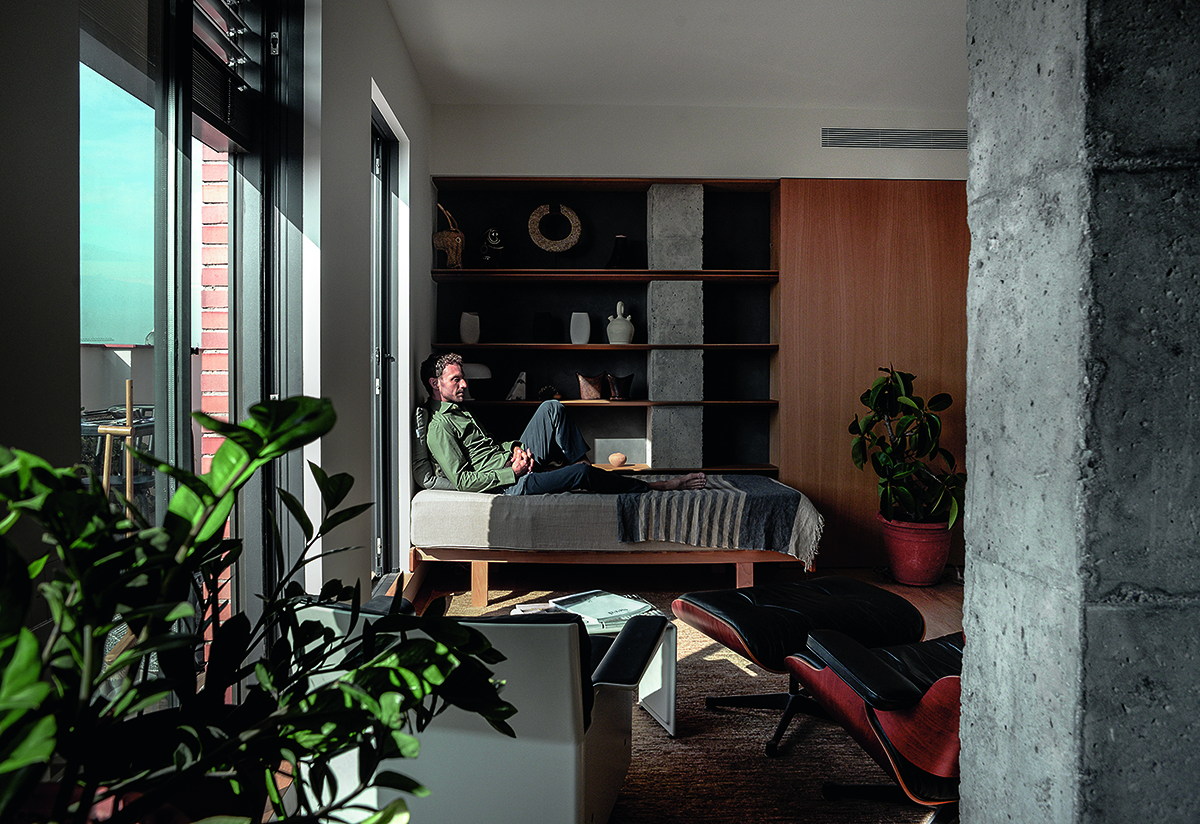
Matt Morley, the founder and director of Biofilico
Biophilic design is an instinctive response to our disconnect from the natural world, an attempt to redress the balance by bringing the outside world in once more, especially in dense, urban environments.
There are various models out there, such as Stephen Kellert’s ‘14 Patterns of Biophilic Design’ and things can get fairly technical if we go down that rabbit hole, but, in general, I keep it simple by referring to biophilic interiors as spaces that harmoniously balance sustainability and wellbeing, with nature acting as the bridge between the two. For me there is nothing more mood-enhancing and visually appealing than a display of organic, seasonal, and locally sourced fruit and vegetables on a kitchen counter, preferably in a variety of ceramic bowls with a wabi-sabi finish and perhaps a Monstera leaf in water for a final botanical flourish.
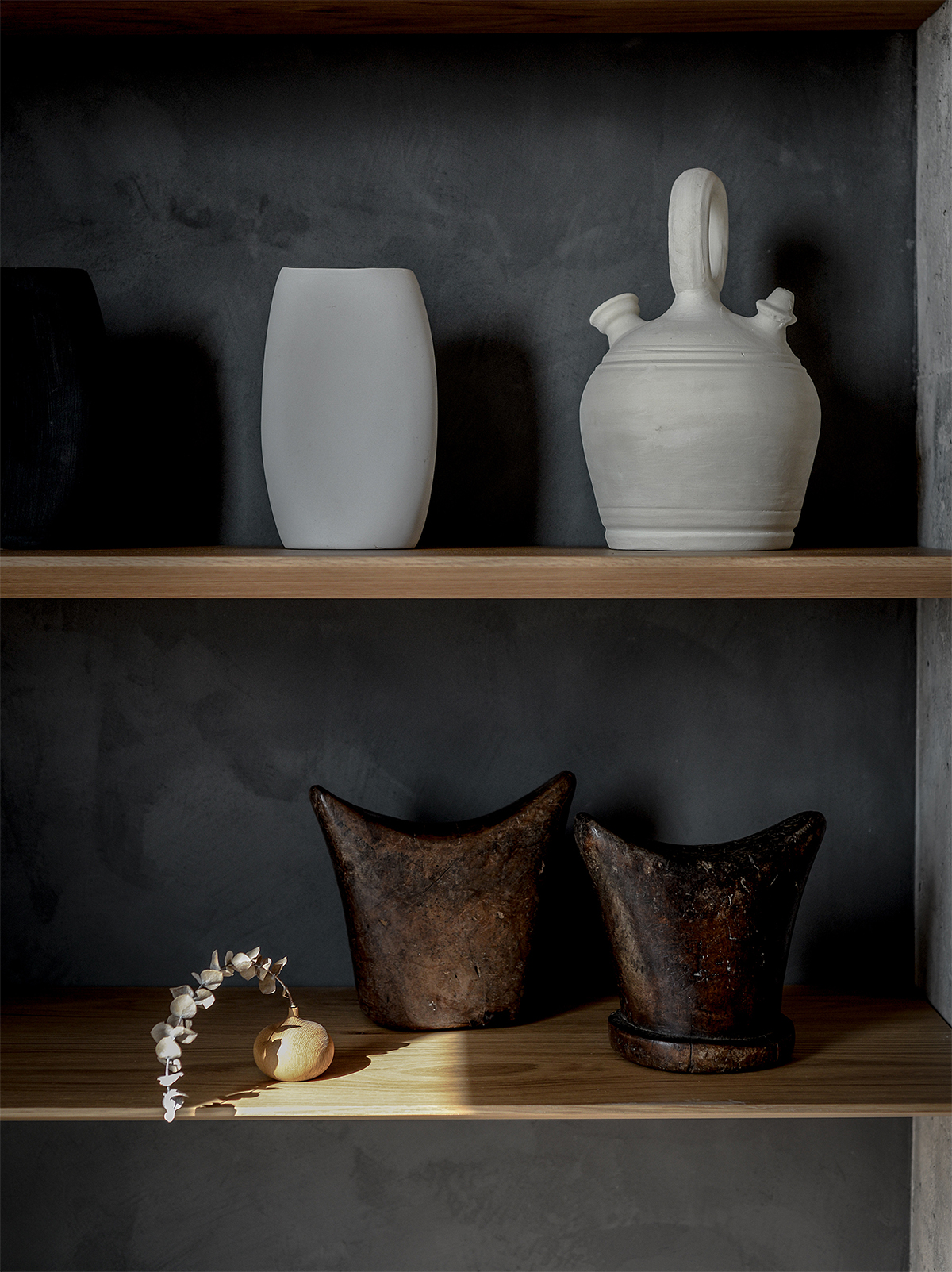
Close-ups of natural elements in Morley’s interiors
Installing a botanical-print wallpaper with toxic adhesives that create VOCs that damage indoor air quality, or placing a couple of randomly chosen plant species in plastic pots in the corner of a room and claiming ‘purified indoor air’, doesn’t cut it. By applying evidence-based design principles we can avoid bio-washing. Wellness tech, such as commercial-grade indoor air quality monitors, accompanied by cloud- based 24/7 analysis and even certification from a standard, such as RESET Air, are now a part of the service our studio offers – especially post- Covid when Indoor Air Quality (IAQ) is more relevant than ever.
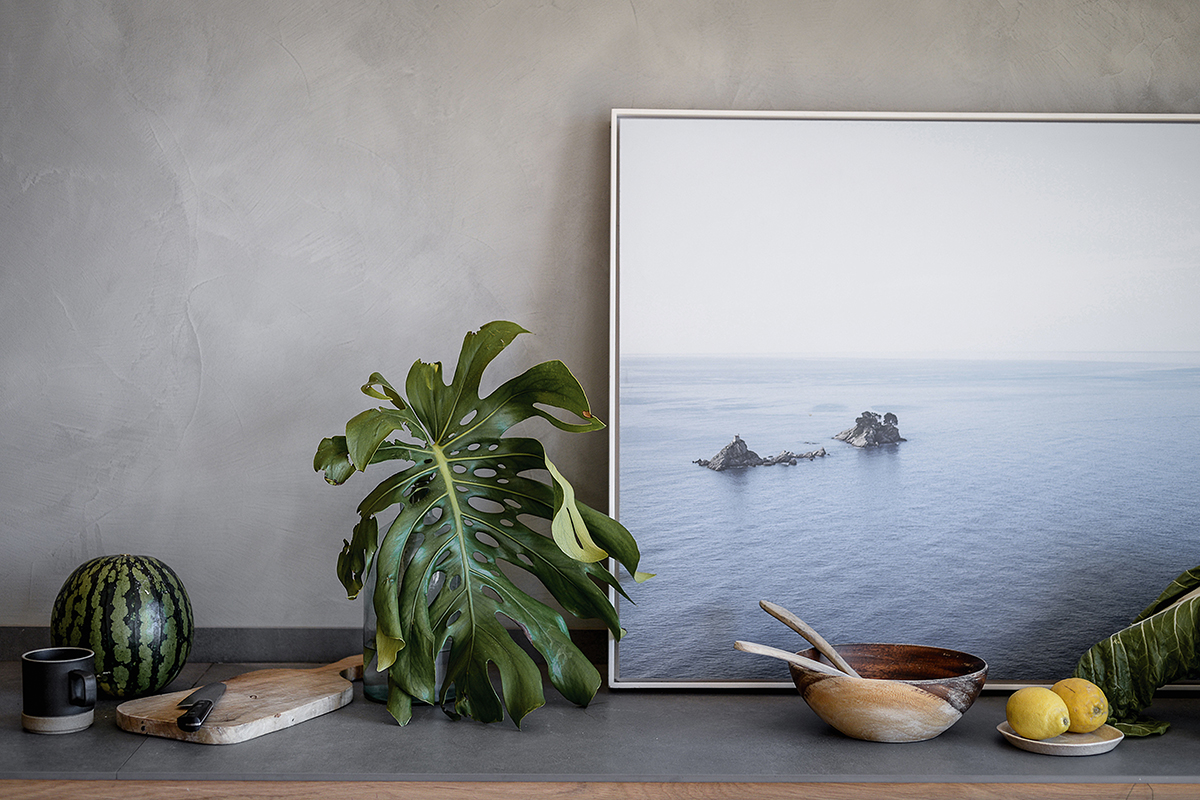
Close-ups of natural elements in Morley’s interiors
Advances in bio-based, organic and above all healthy building materials also provide us with an ever-growing tool kit of green and healthy alternatives to paints, fabrics, insulation materials, furniture and adhesives that can otherwise contain toxic chemicals and have a negative impact on the environment. Biophilic soundscapes from the likes of SWELL (sound wellness) now offer on-demand access to nature-based sound experiences designed for mental wellbeing.

Close-ups of natural elements in Morley’s interiors
A biophilic lighting strategy combines efforts to maximise daylight exposure, with LED circadian lighting systems that mimic our natural 24-hour cycles to both enhance productivity during the day and improve sleep at night, while reducing energy consumption in the building. Simply by providing more of the natural light spectrum and intensity our bodies are programmed for at certain times of day, we can gently improve energy levels by day and promote restorative rest by night.
Harleen McLean
Harleen McLean Interiors
The term ‘biophilia’ was first coined by Erich Fromm in the 1970s – calling it “the passionate love of life and of all that is alive” – and it has been the basis of my practice since I established it more than 30 years ago. It’s always been a part of my approach to design. I grew up in Africa, surrounded by nature, and it was only when someone in the US said to me, “Oh, you’re a biophilic designer”, that I put a name to it. I had just always been inspired by wildlife and landscapes, and the colours linked to them. It is inherent, because of where I come from.
Often when you’re working on a home, you have major obstacles. I am working on a Victorian residence in London, and the structure doesn’t lend itself entirely to the changes I want to make. But often you can use modern elements to create a biophilic interior. A floating staircase works well, because it’s all about space and light.
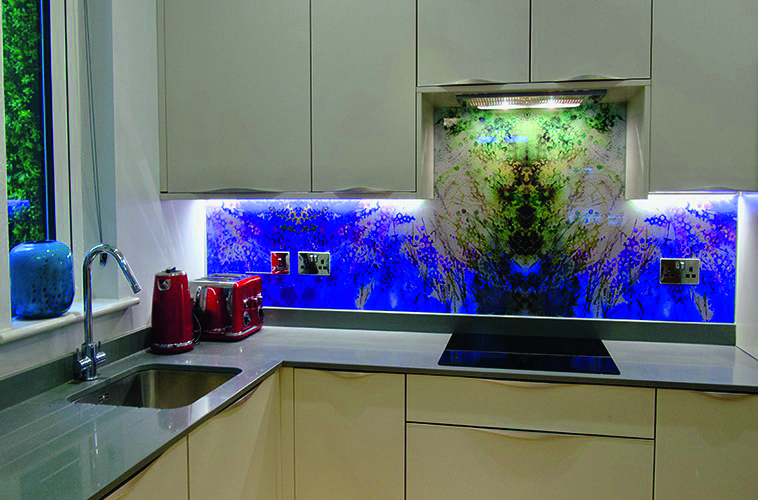
An original bug-themed kitchen splashback designed by Harlan McLean
Certain simple things can contribute a lot, such as lavender. The colour brings something from the natural world, you can use the fragrance via candles, and also bring it inside, literally, as a pot plant. You can buy fresh culinary lavender and hang it up to dry in your kitchen. You’re creating a multi-sensorial experience in the room you entertain in, through textures, shape and colour. It’s important to have ease of
movement in the kitchen, while activating your taste buds and other senses.
Technology has changed a lot since I started my practice, which has helped. Years ago we had ‘mood lighting’, and now you can do a million things with the colour temperature of light.
Read more: Sophie Neuendorf: NFTs – Hype or Here To Stay
Visual elements within my designs aren’t always obvious. I was interested by what WilkinsonEyre and Grant Associates did with the Gardens by the Bay in Singapore. The architecture is inspired by orchids, but the lighting used in the towers is inspired by the patterns in a mammal’s eye, so when they light up you have a connection to that, even if you don’t know what it is. I frequently incorporate a visual representation of animal or plant DNA in fabrics or wallpapers that I create for an interior. It’s subtle, but it has impact and meaning.
Find out more: gaggenau.com
This article appears in the Summer 2022 issue of LUX


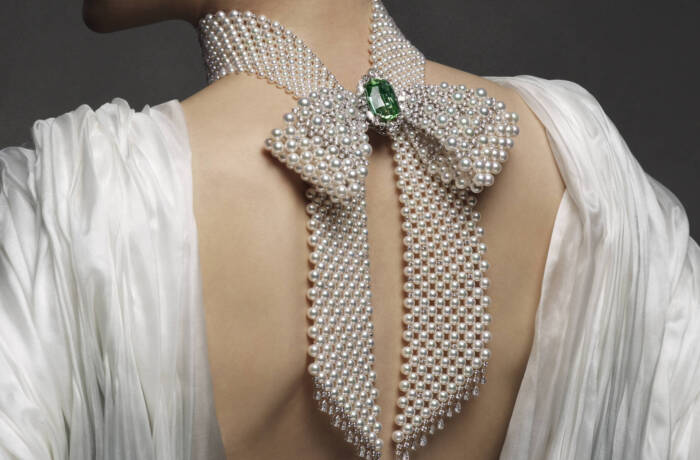






Leave a Comment